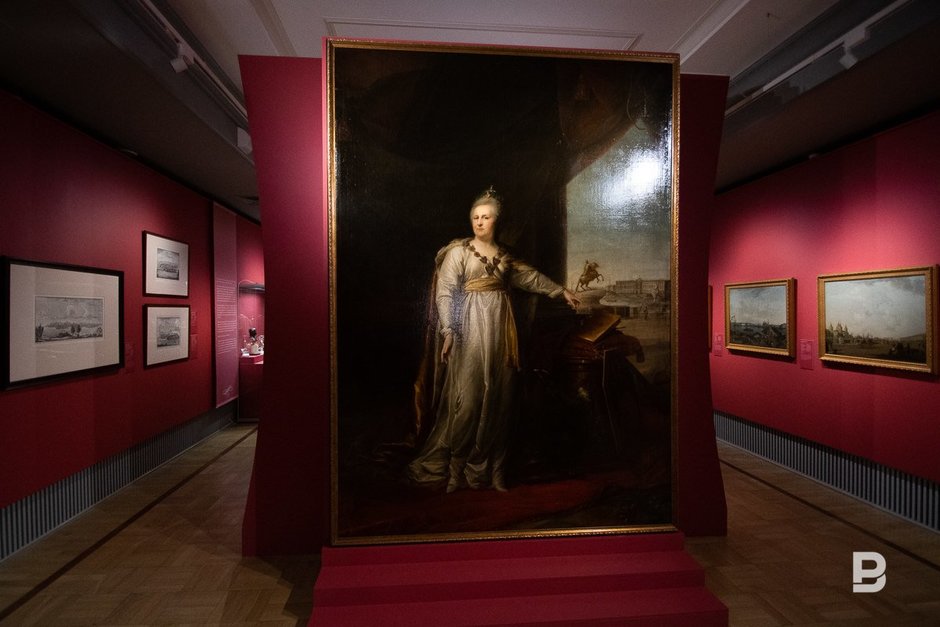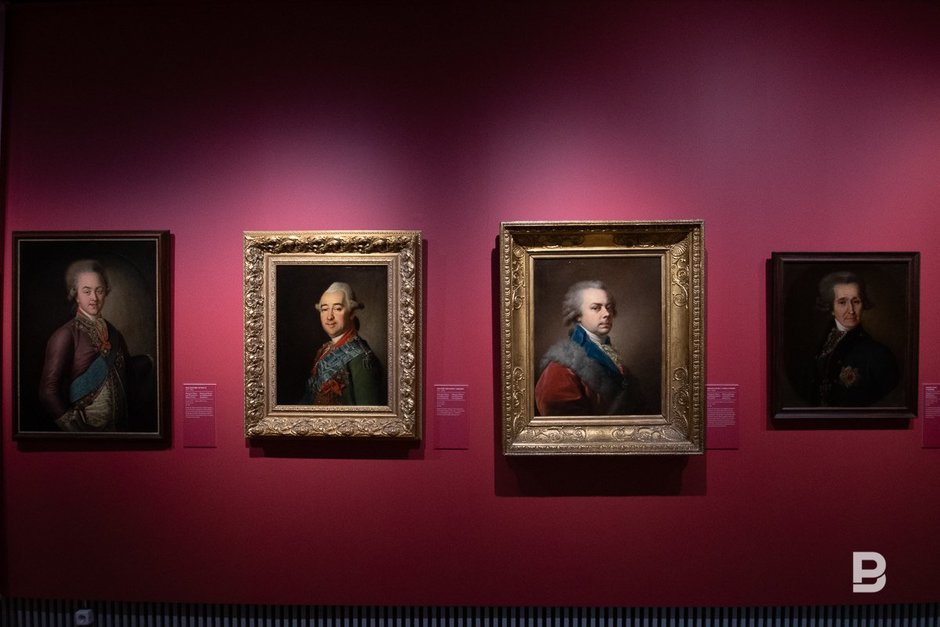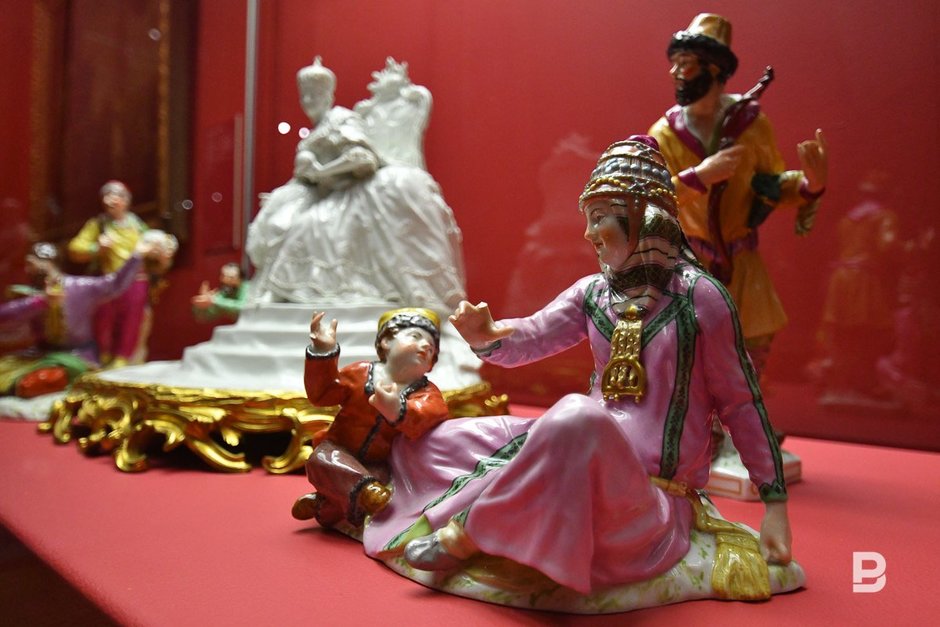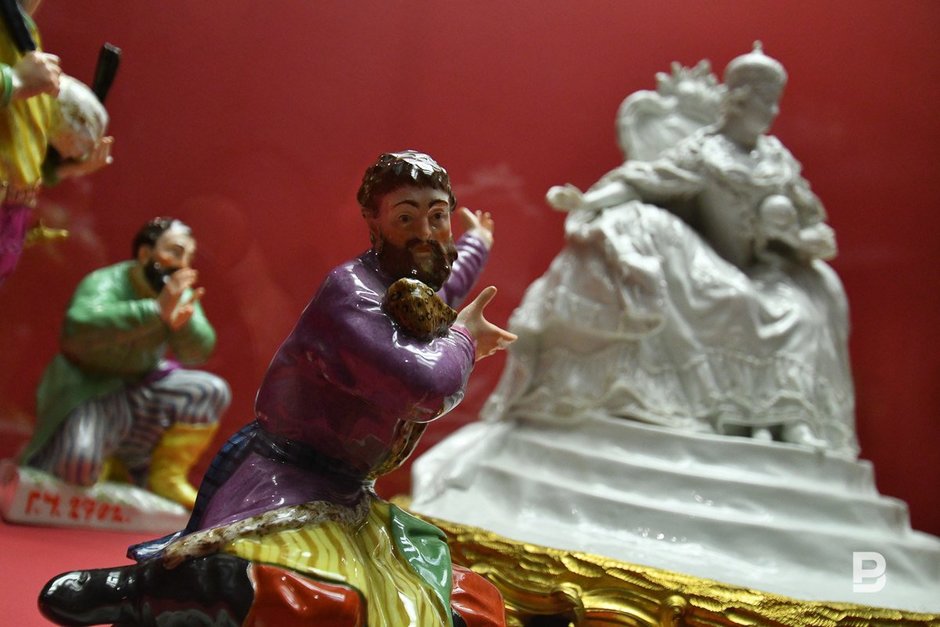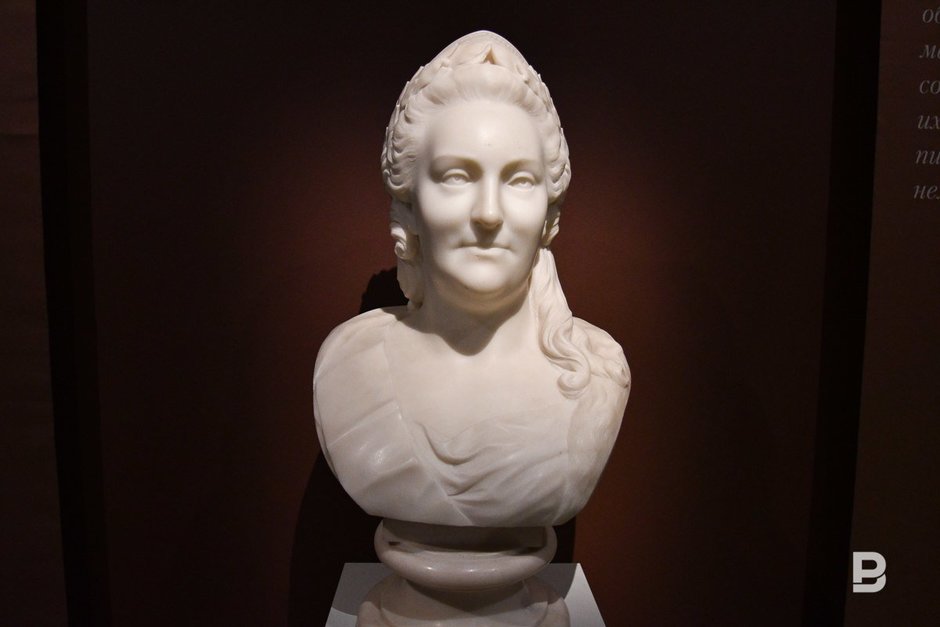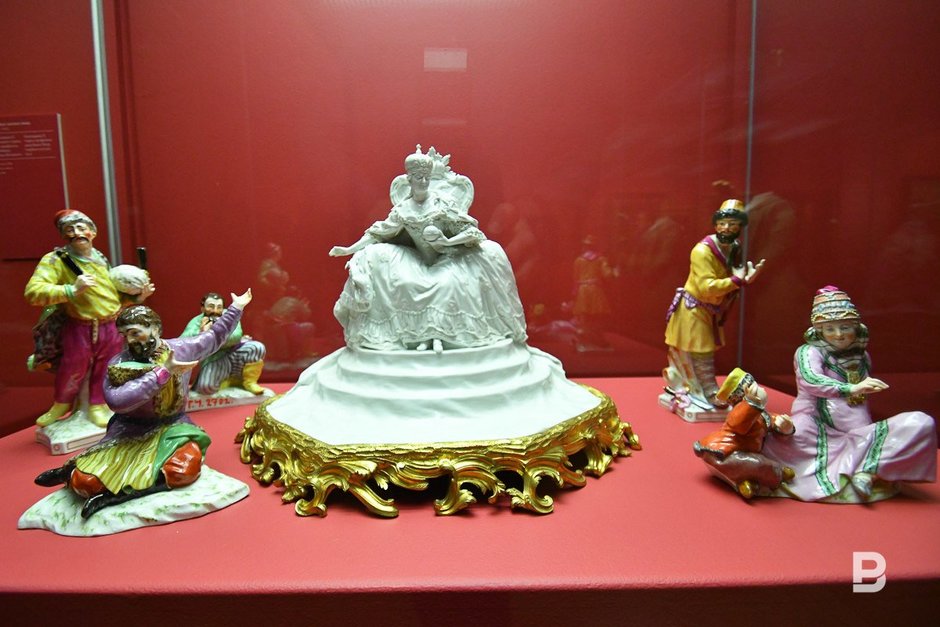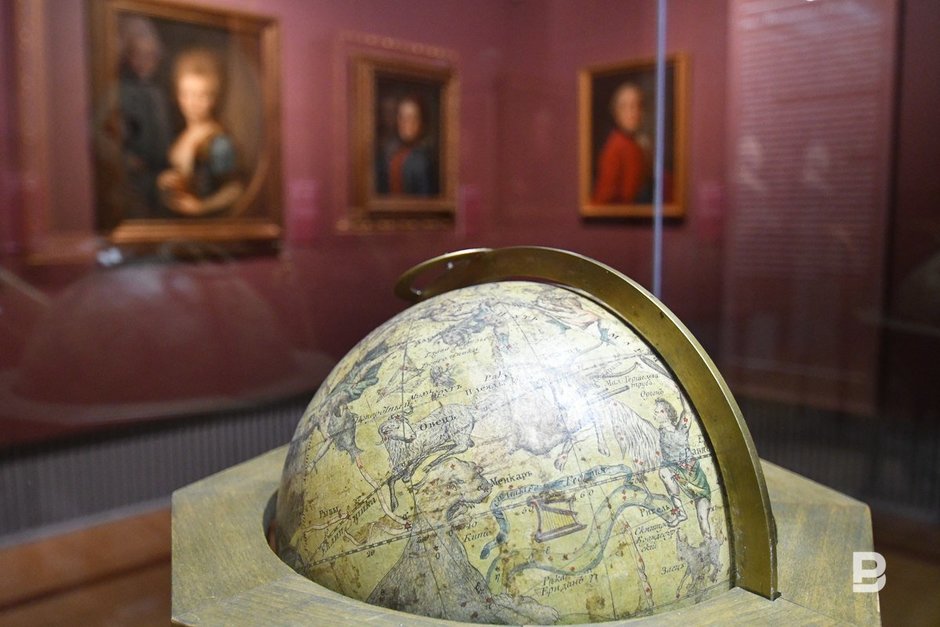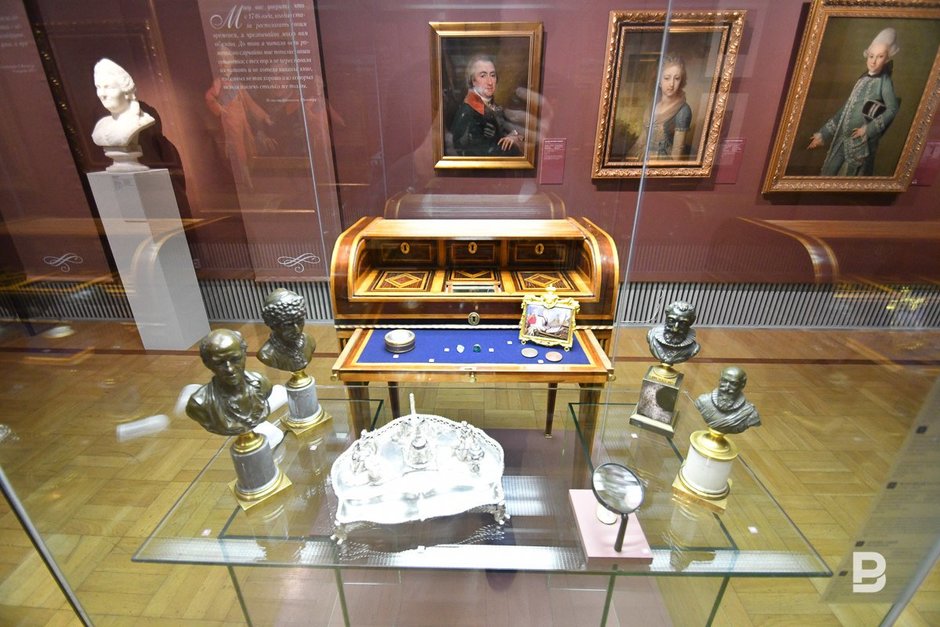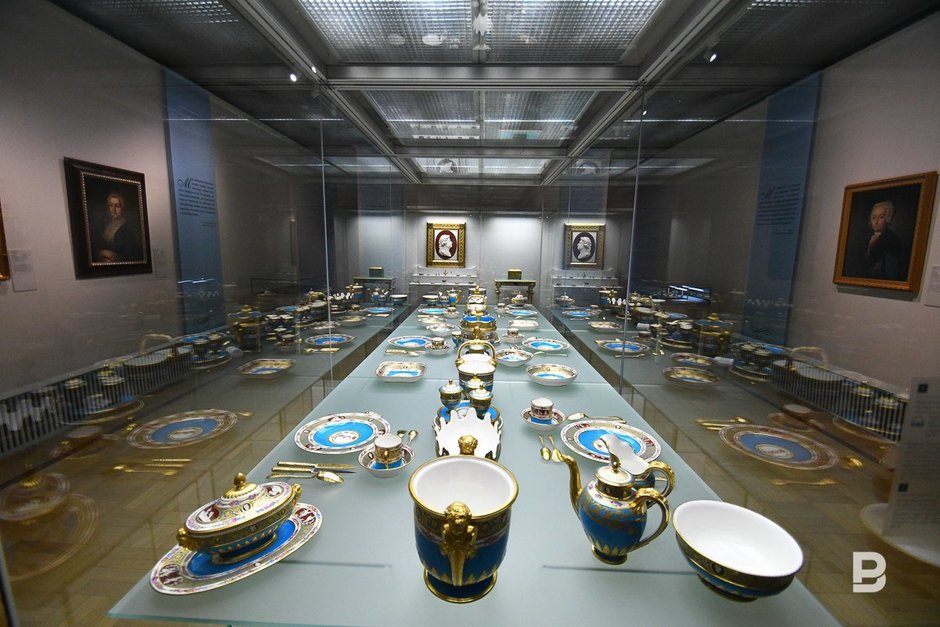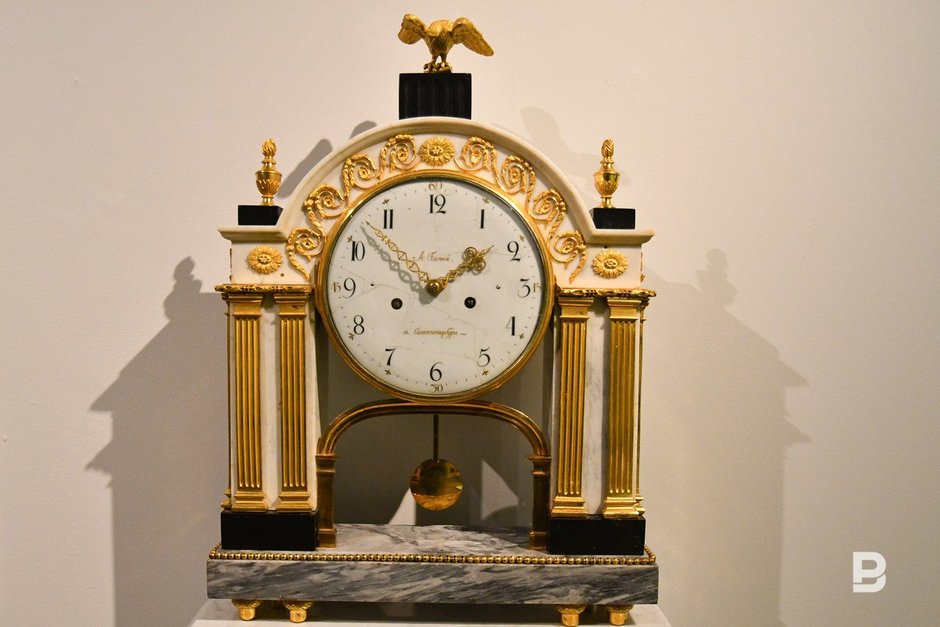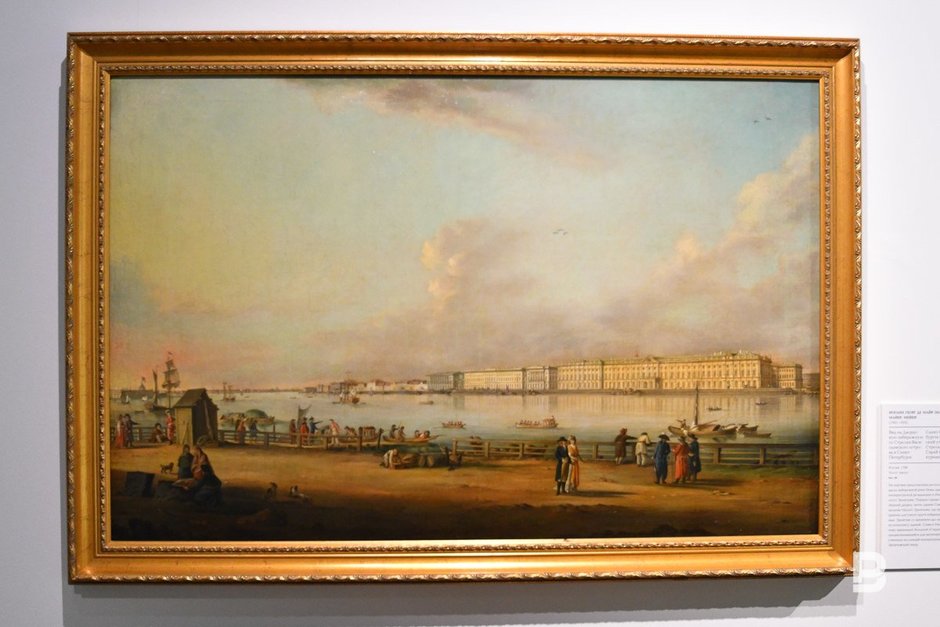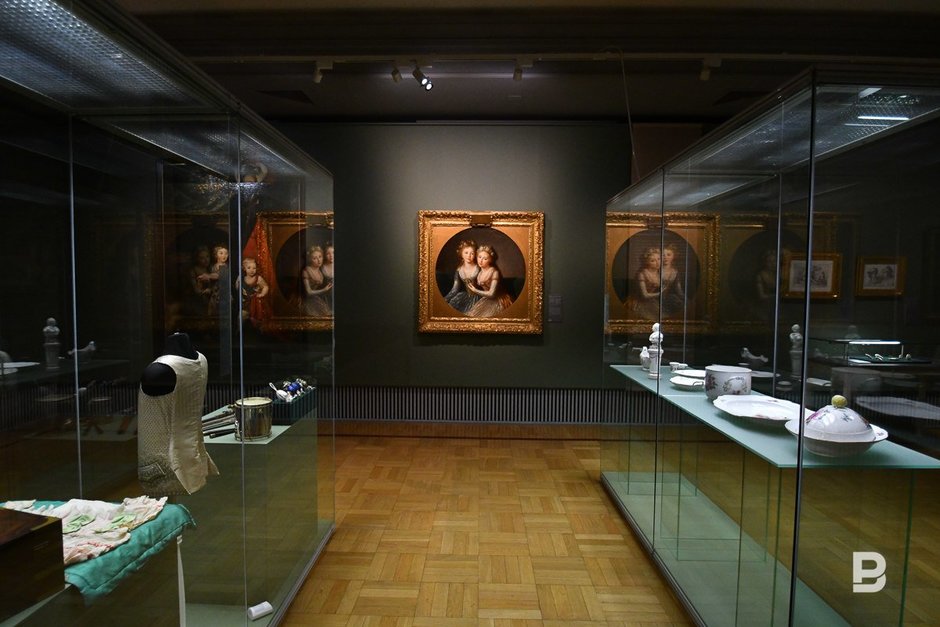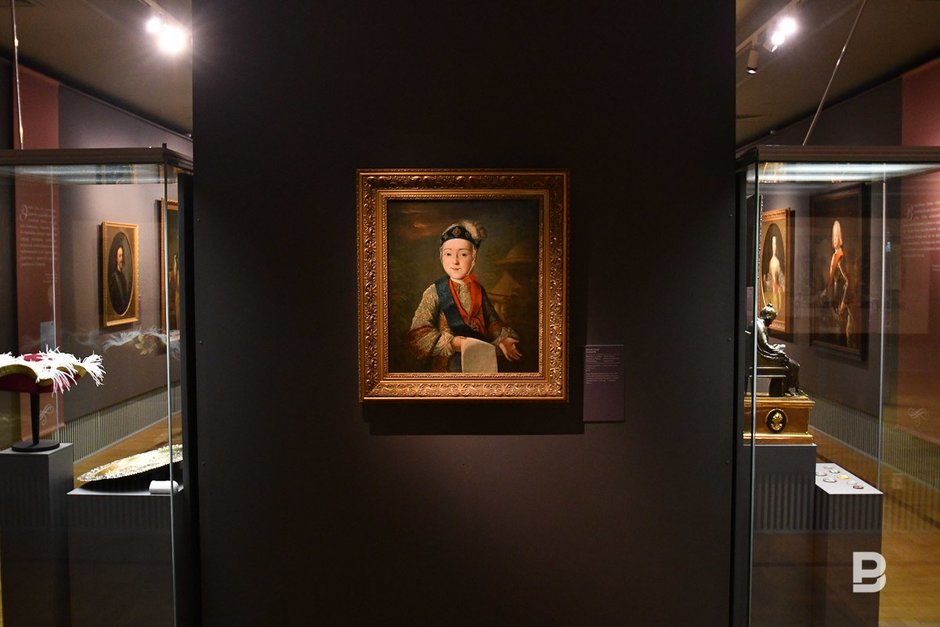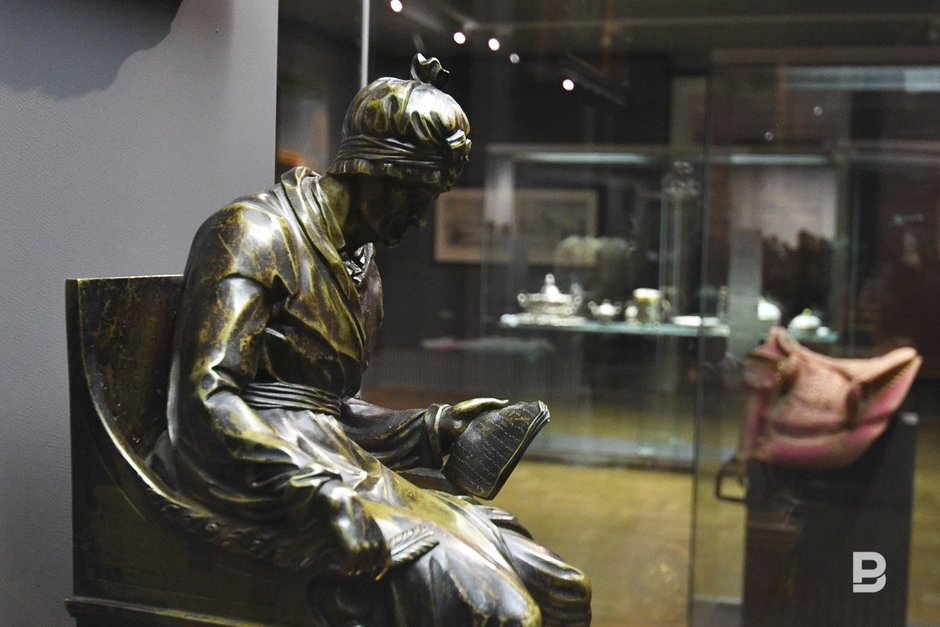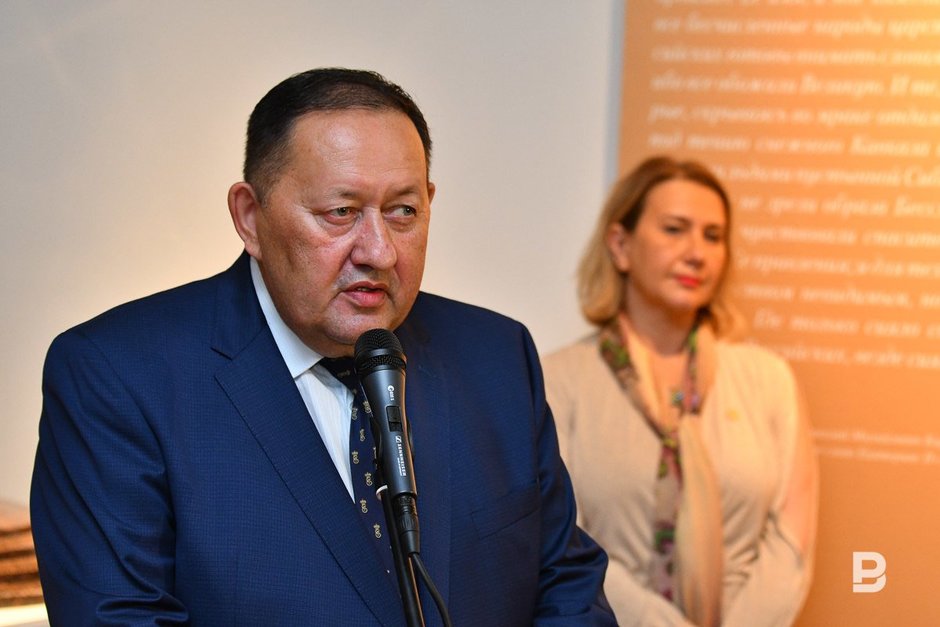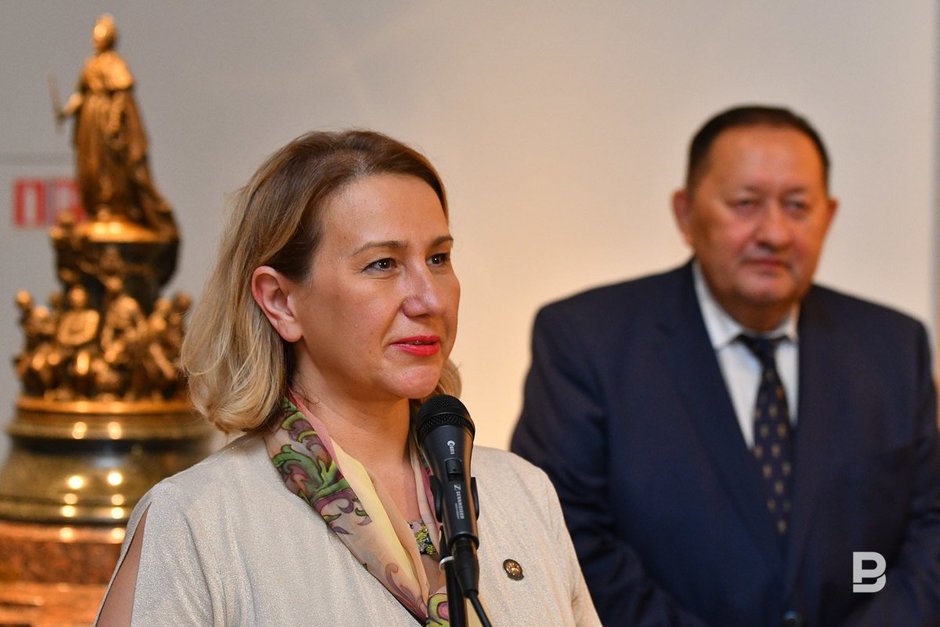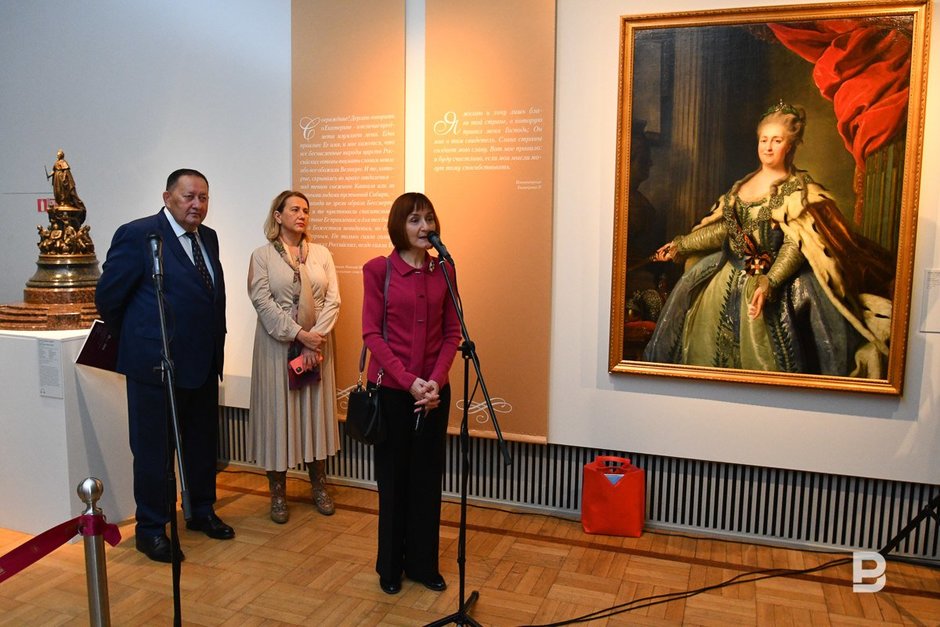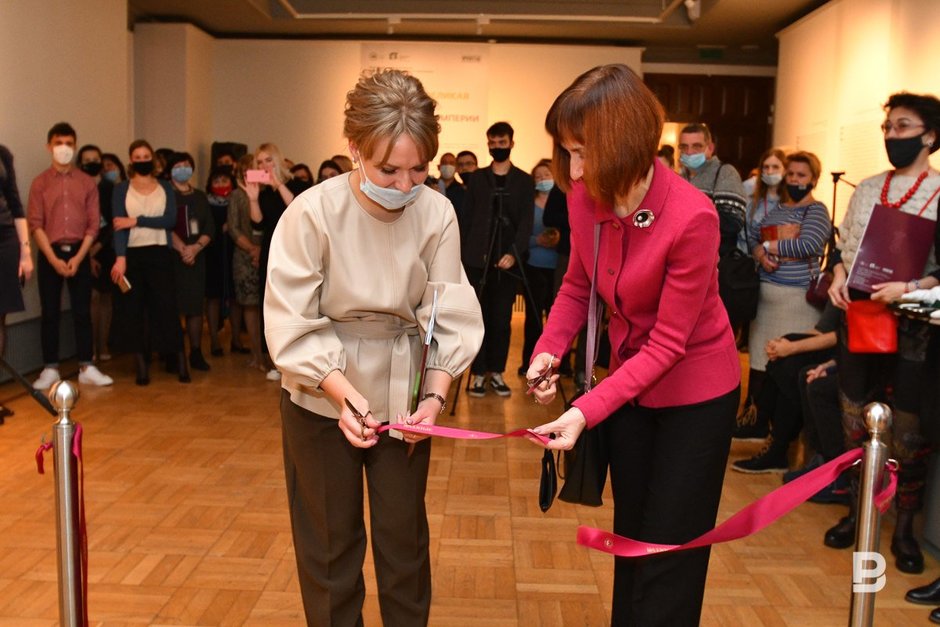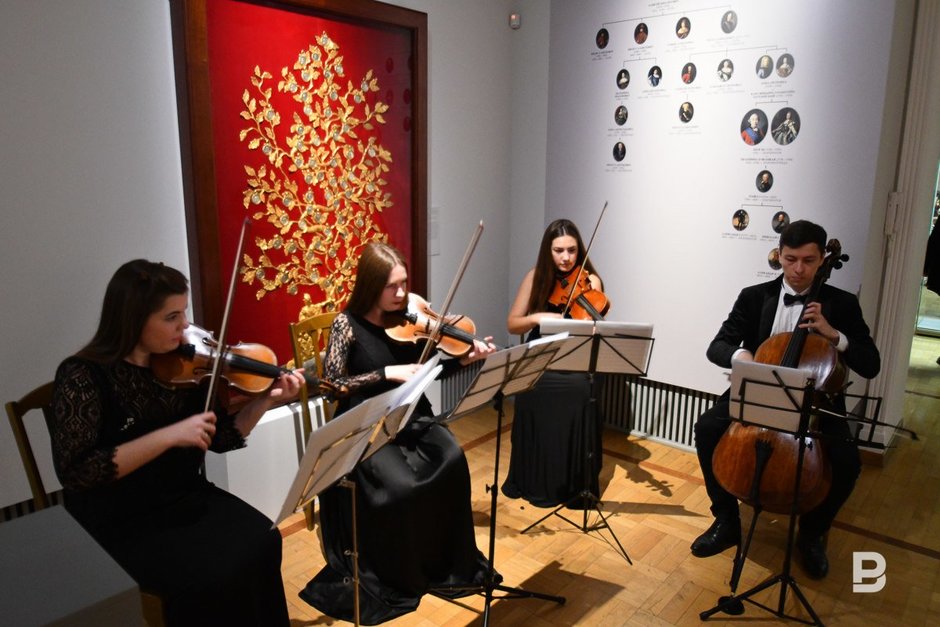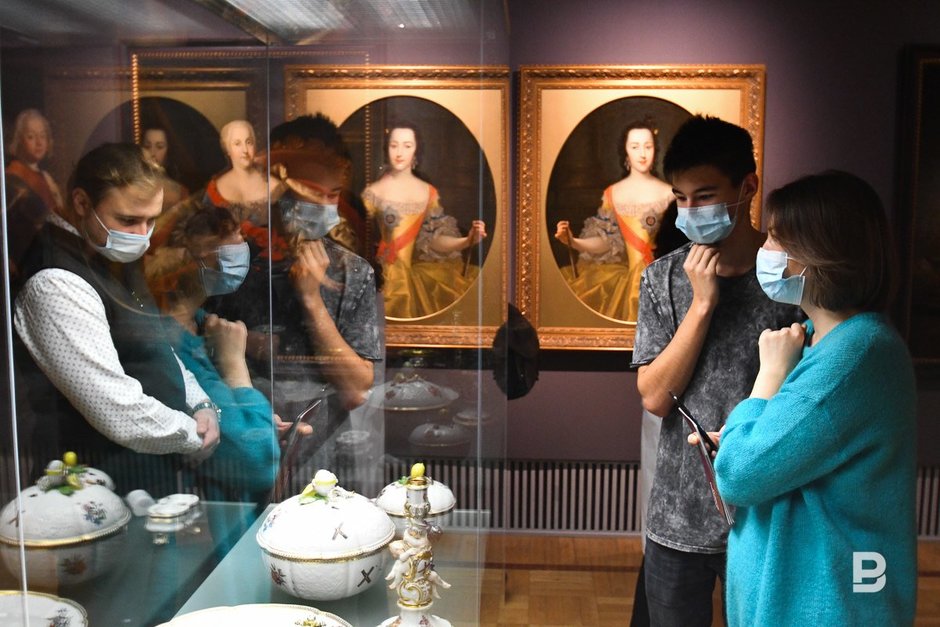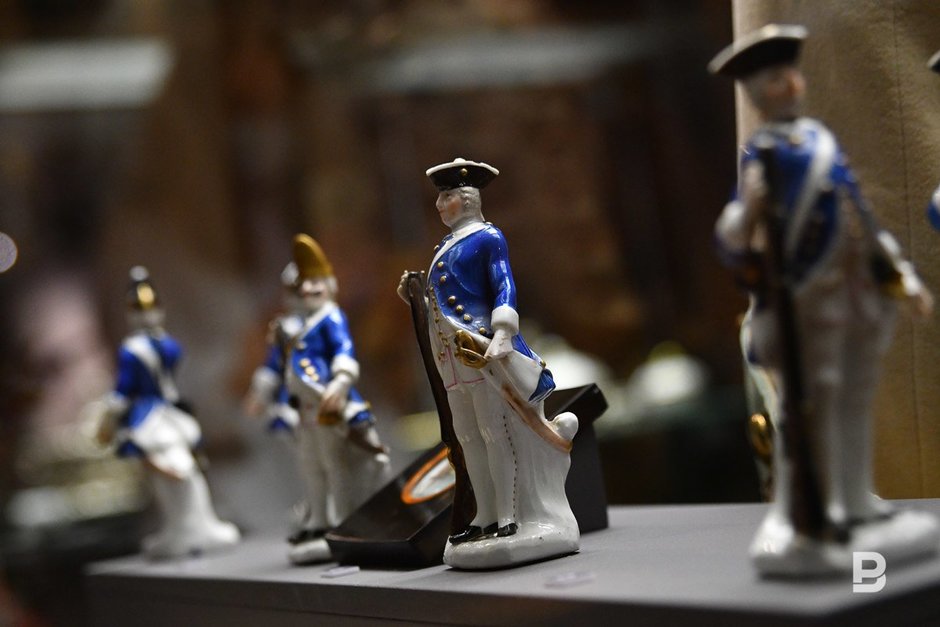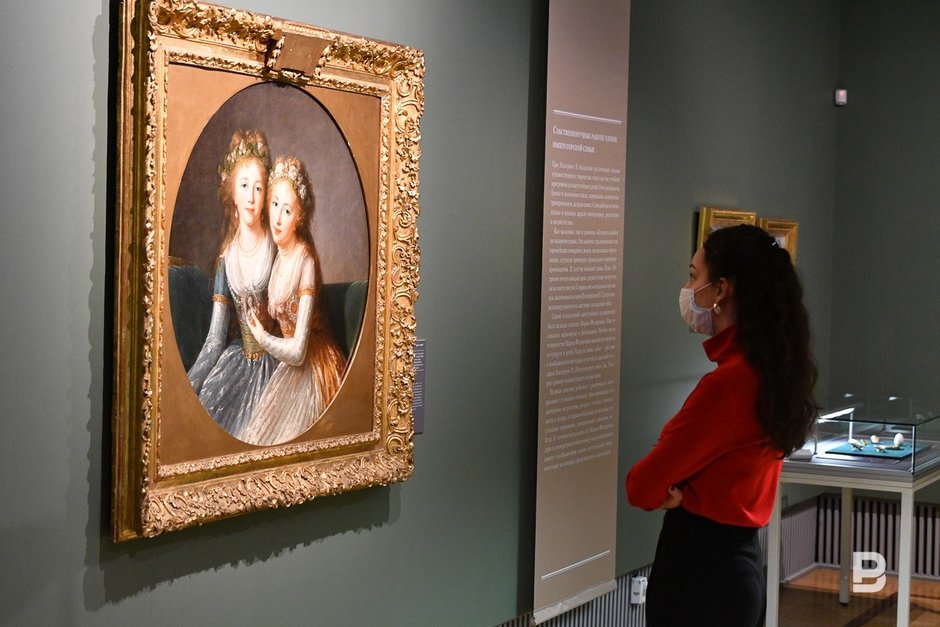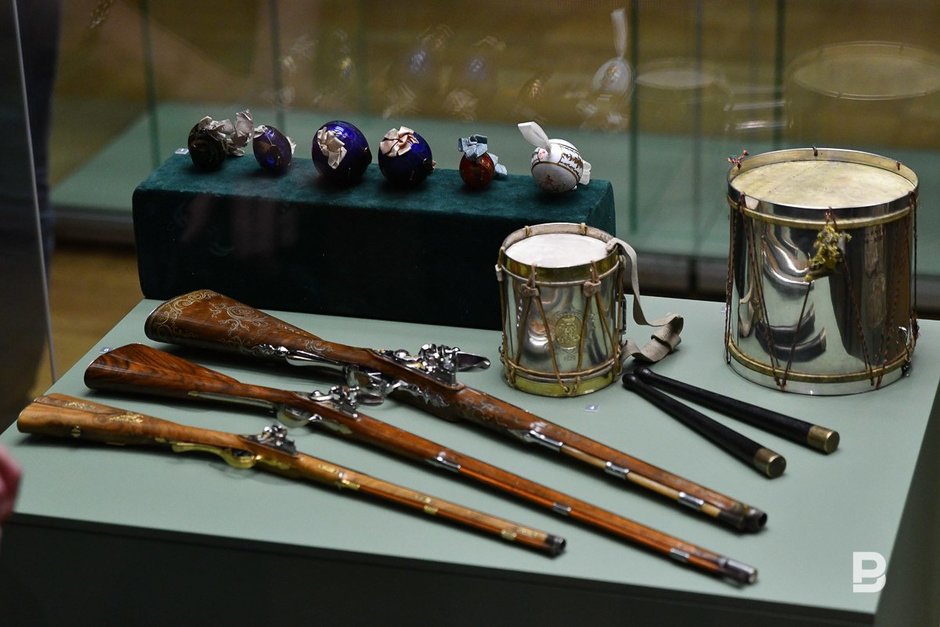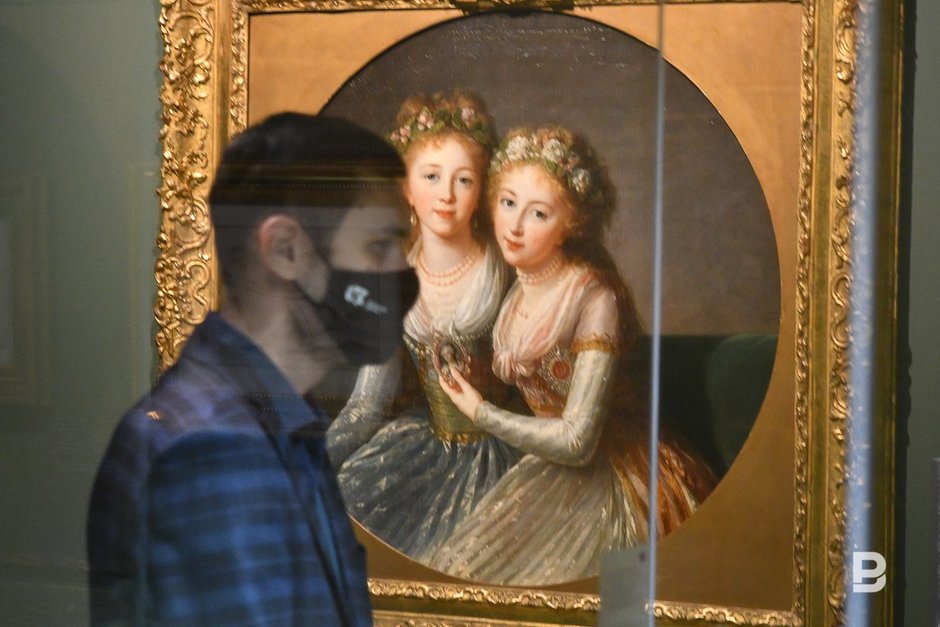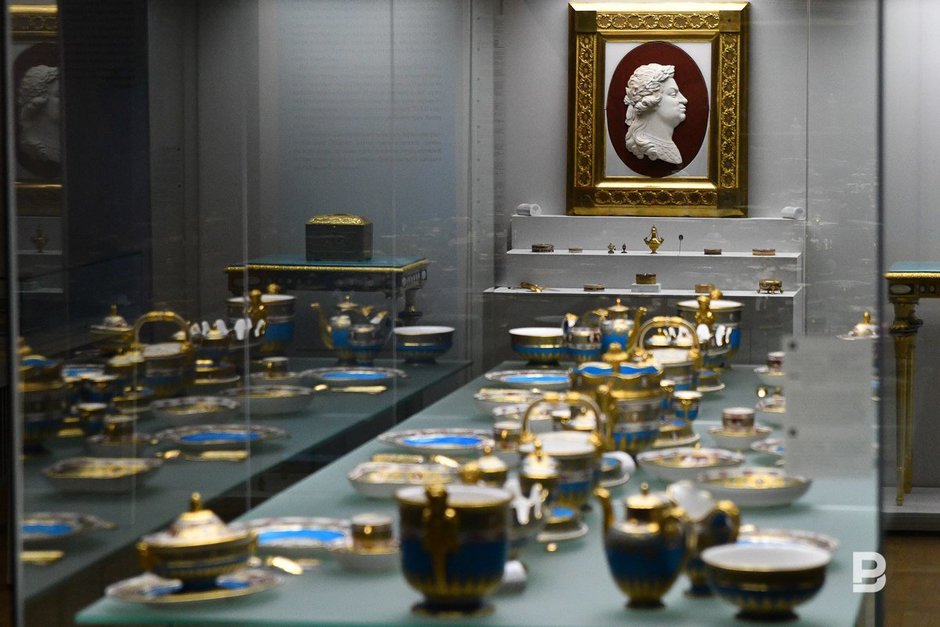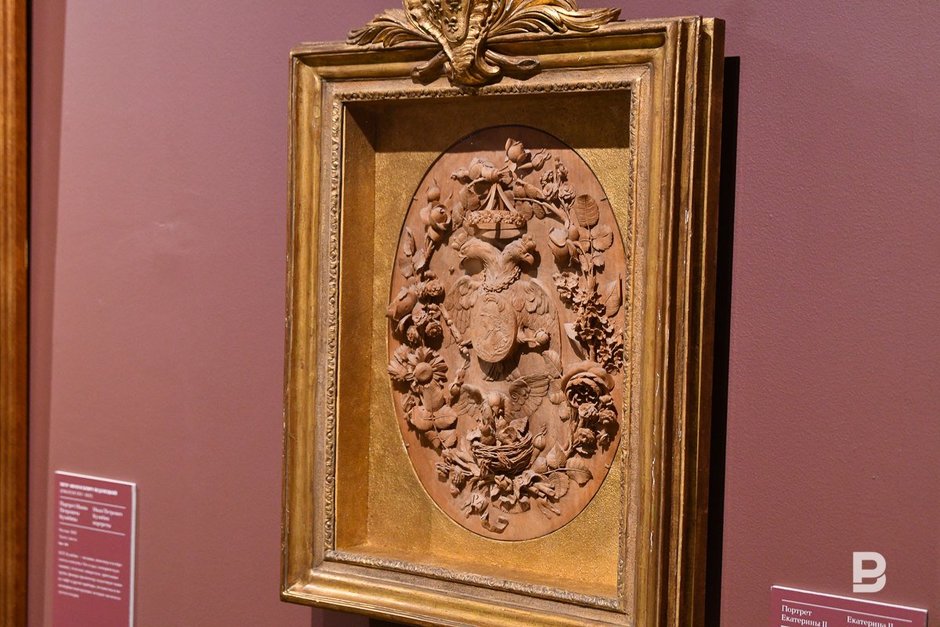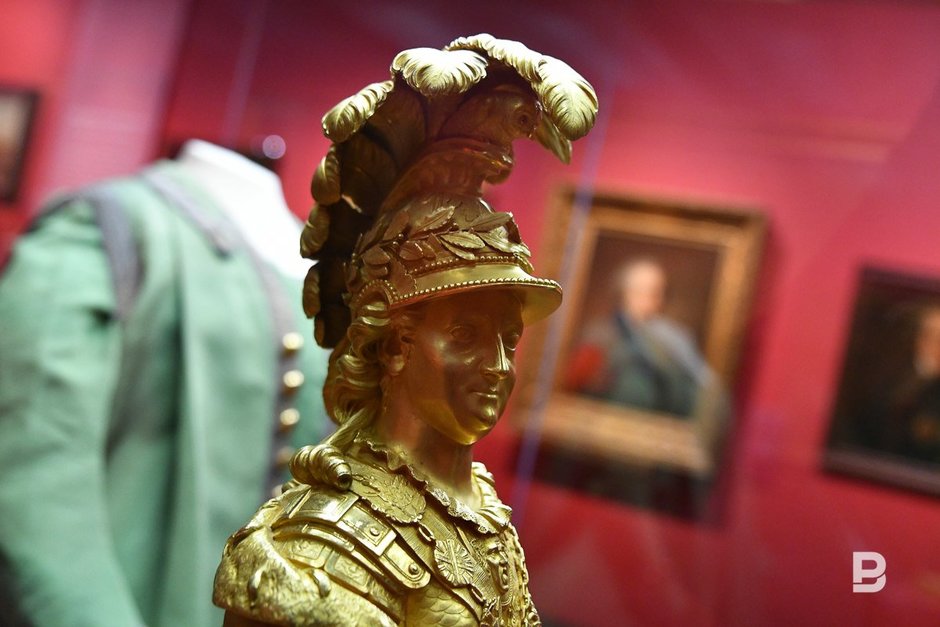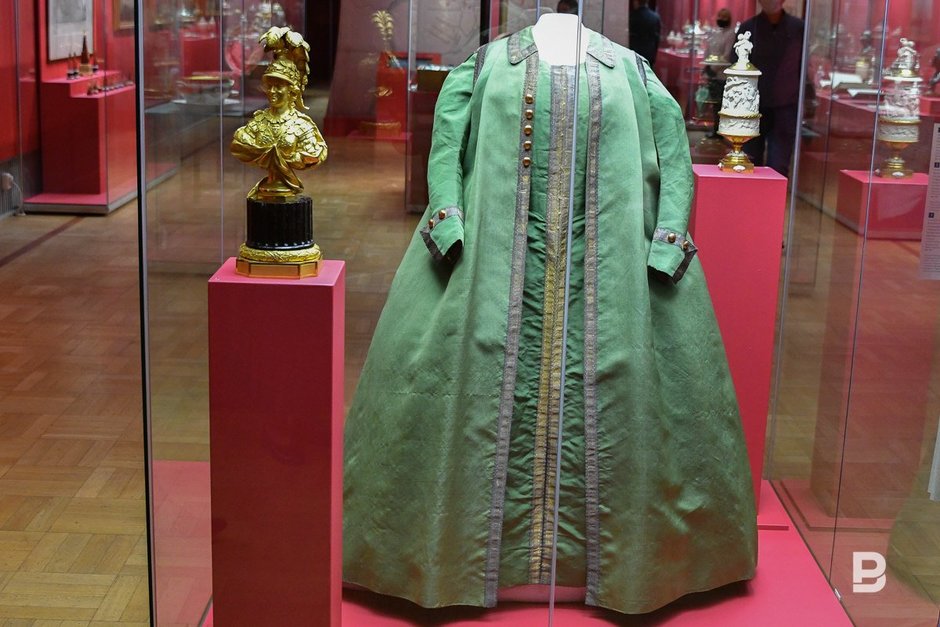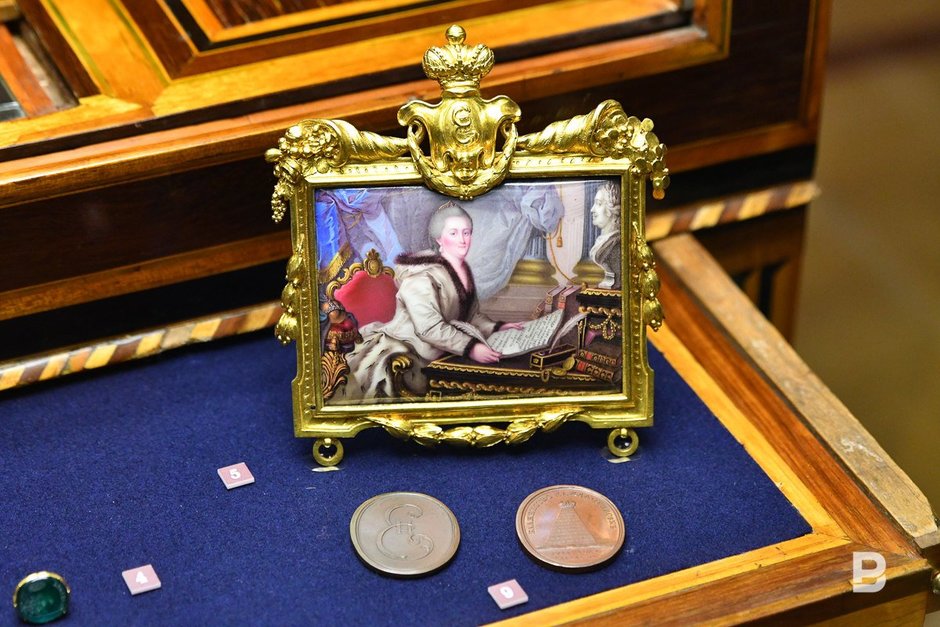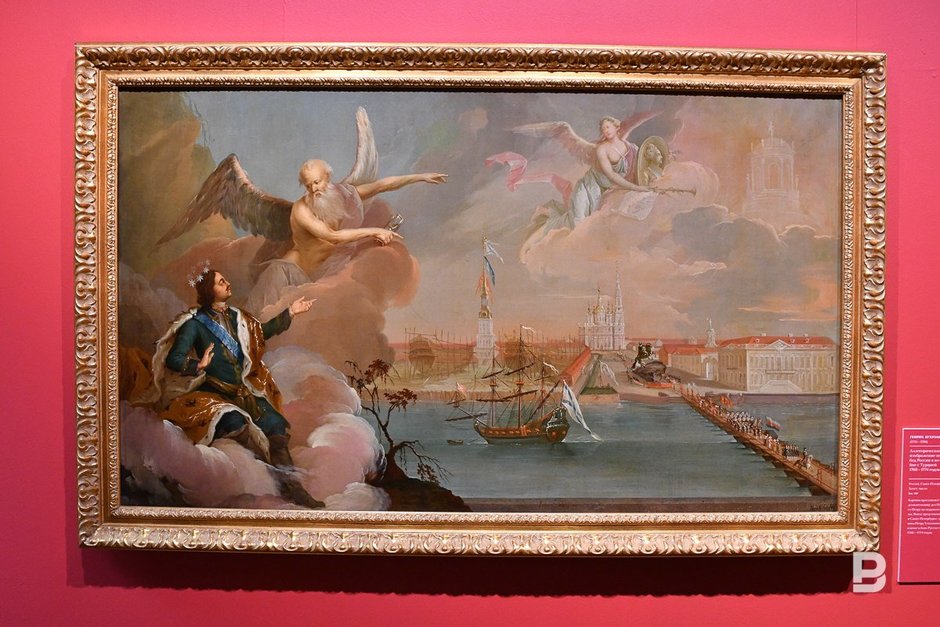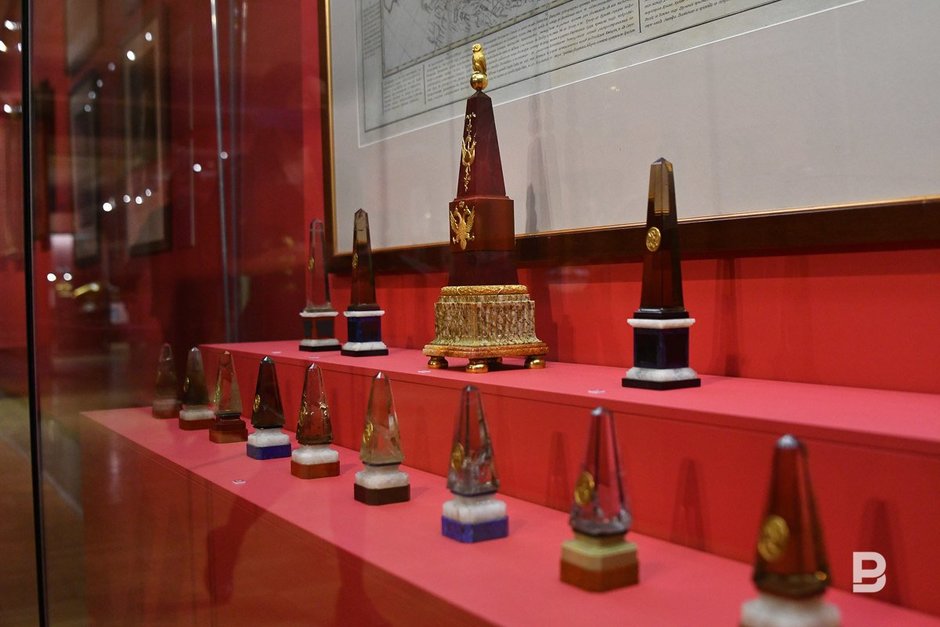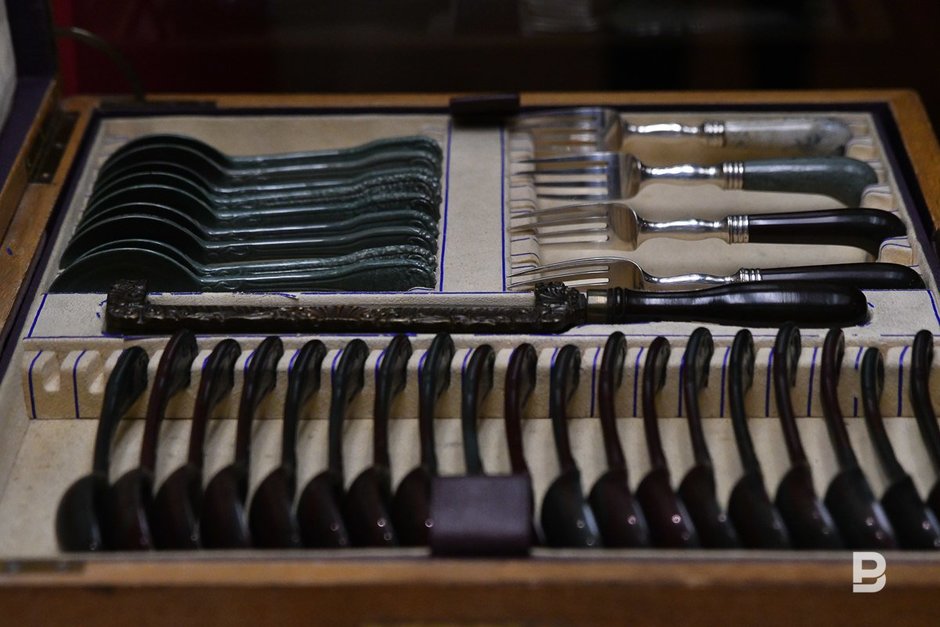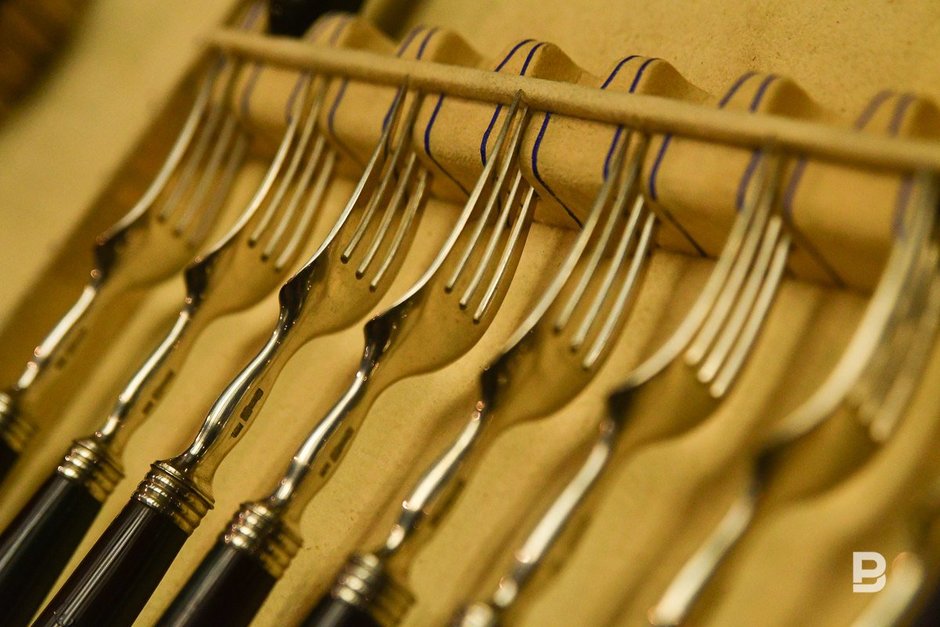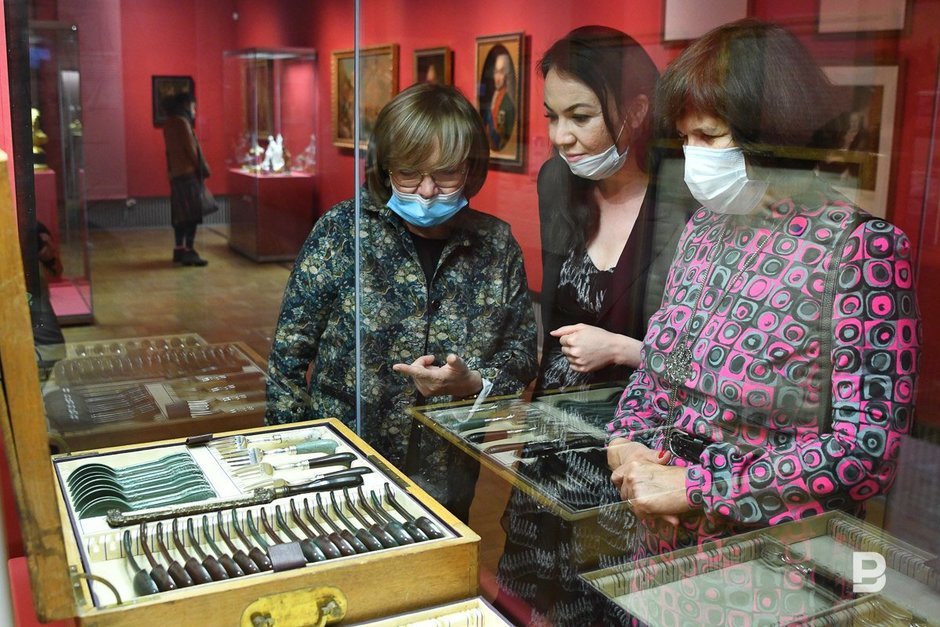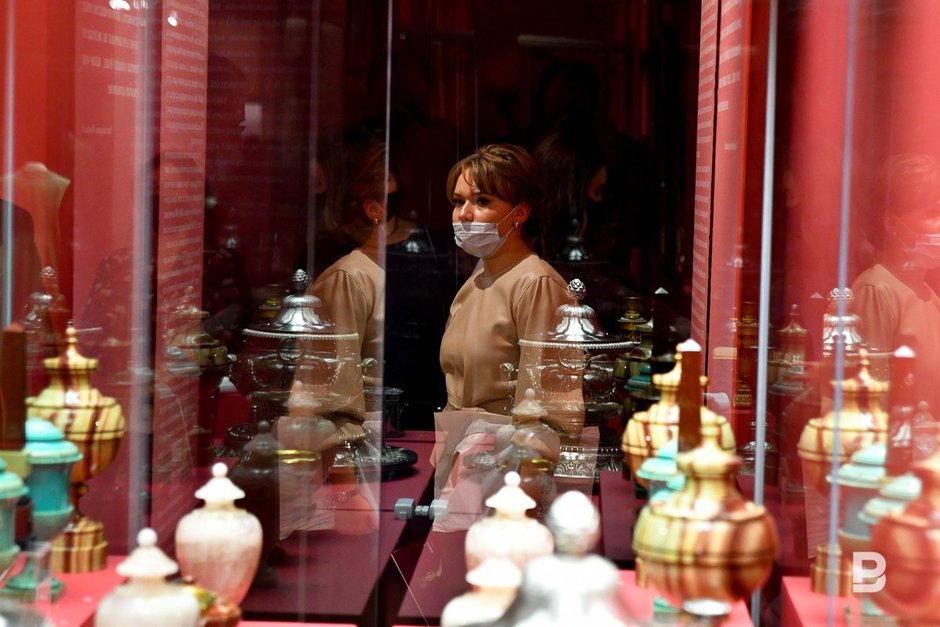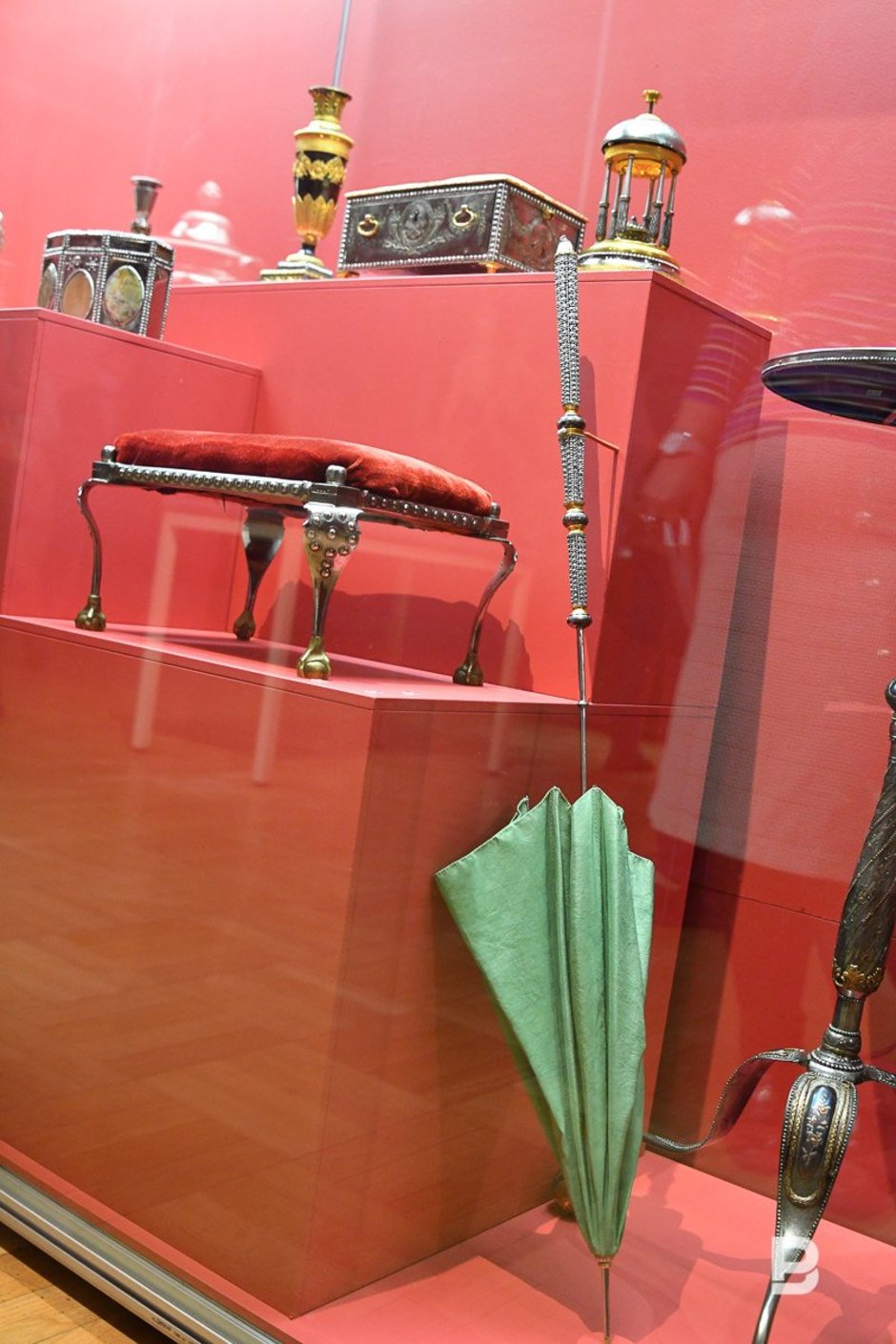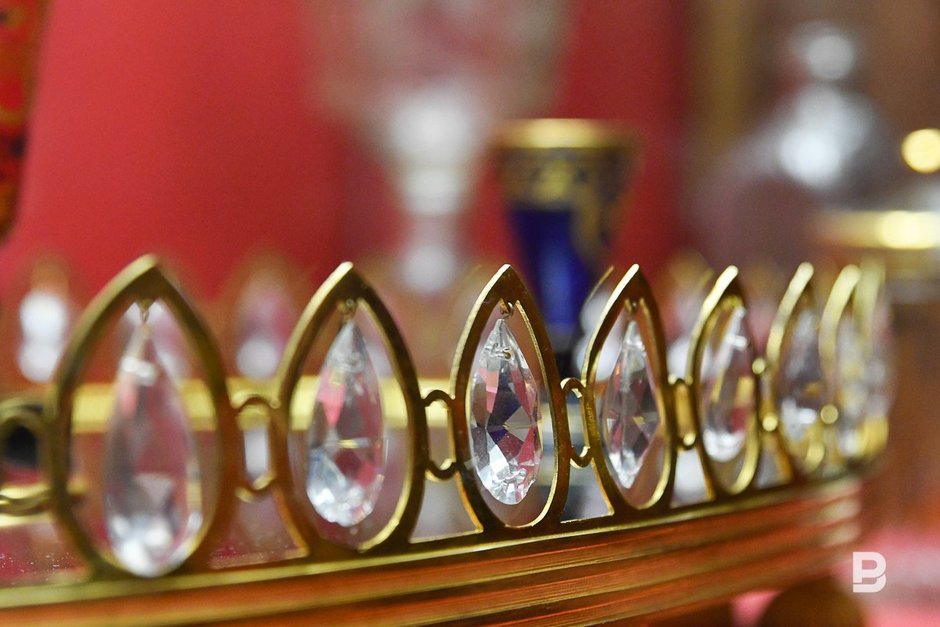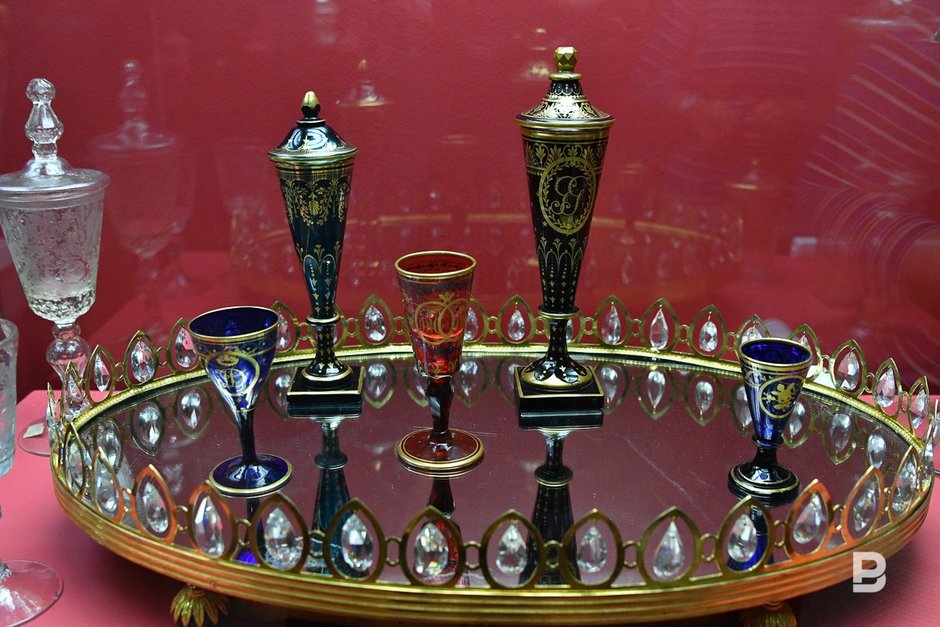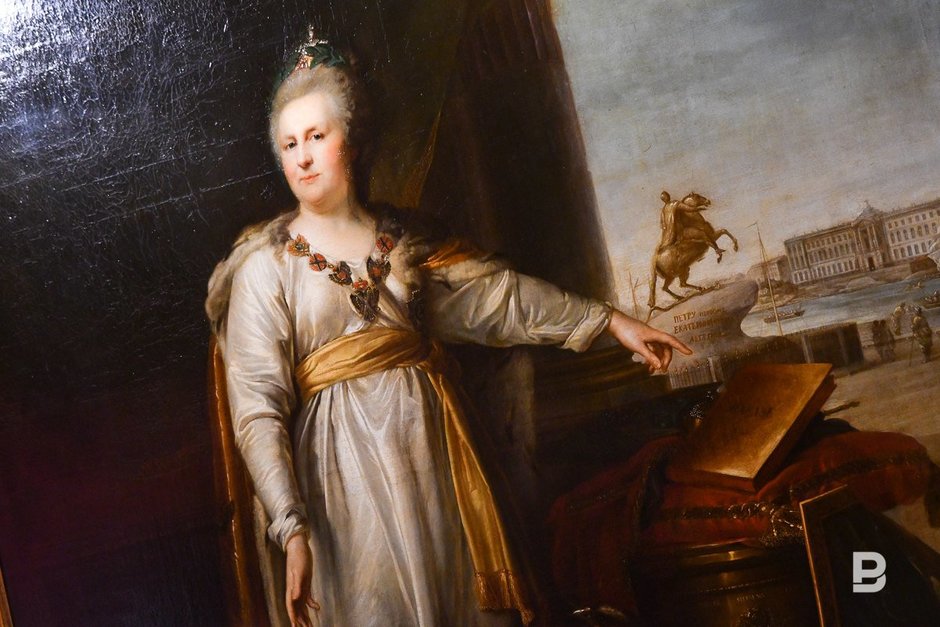Catherine the Great again in Kazan: medication for mental complications during epidemics
A new exposition from the State Hermitage collection has opened in the Hermitage-Kazan
Catherine the Great. Golden Age of the Russian Empire exhibition has opened in the Hermitage-Kazan. One of the most expected museum projects of this year includes 525 exhibits from the State Hermitage’s collection. The exhibition was deliberately prepared for Kazan — it has 30 items restored for the exposition as well as 25 exhibits shown for the first time. It is mainly rare items linked with the empress’s visit to Kazan, the city’s life during those times as well as items dedicated to the suppression of the Pugachyov Revolt. Five halls of Kazan’s Hermitage will be full of exquisite things from Catherine the Great’s collection, luxurious items of Russia’s golden age — mute witnesses of life in the royal private room — at least until next April.
Mikhail Piotrovsky’s recipe
Catherine the Great exhibition is the 21st joint project of the State Hermitage and Hermitage-Kazan centre. Director of the Saint Petersburg museum Mikhail Piotrovsky usually arrives to open expositions on such a scale in Tatarstan. However, due to the clear reasons, he limited to a video message:
“We have finally brought the Catherine to Kazan! It is a beautiful, educational and even a didactic exhibition. Moreover, it is a gesture of our friendship that pandemic can’t impede. What’s more, it is medication as well as any exhibition for mental complications that come during epidemics.”
The director general of the Hermitage noted that people tend to rewrite history, but things won’t lie. They, Catherine’s personal belongings, will tell you their owner’s true history accurately. Mikhail Piotrovsky added that Catherine was once amazed at Kazan. She considered it “the gates to Asia”, and according to Gavriil Derzhavin, was the first among Russian rulers to arrive here with good intentions. “...This city, without doubt, is first in Russia after Moscow..., and everybody sees that Kazan is the capital of a big kingdom,” this is how she expressed her opinion about the city in letters.
One service is for husband, another — for governor
According to the exhibition’s commissioner, senior researcher of the Department of History of Russian Culture of the State Hermitage Natalya Bakhareva, “Catherine is probably the most popular exhibition in the museum’s collection in Russia and abroad”.
“Every time we change the concept by showing new things. Here we are presenting an exhibition that was deliberately prepared for Kazan. We selected everything that seems to us to be important, necessary and interesting for citizens and guests of Tatarstan. Some sections include items that have never been exhibited. For instance, they can be seen in such sections as Catherine’s Travels — trip things, a road dress, porcelain. It is also items that link the empress with Kazan, for instance, the Quran translated into the Russian language. A lot of premiers await visitors in the section dedicated to the suppression of the revolt chaired by Pugachyov.”
25 items of the Hermitage’s collection have been exhibited in Kazan for the first time, said Director of Kazan Kremlin Museum-Reserve Ayrat Sibagatullin at the opening. “The exhibition consists of over 500 items or, to be more precise, 525, which makes the exposition the biggest among the Russian regions’ exhibitions. 30 items were deliberately restored. The exposition occupies five halls of the centre,” he stressed.
Indeed, all five halls and all sections have unique items. As for Road Porcelain, it is a unique service for six people made of Sevres porcelain adorned with cameos. The empress gifted it to her secret spouse Grigory Potyomkin-Tavrichesky. Later he sold it to the treasury — the tableware was served in the palace only on special occasions. By the way, according to Mikhail Piotrovsky, Catherine the Great is also known for “dethroning Peter III and choosing the museum to her liking, thus establishing women’s rights”.
Catherine gifted another interesting service to the Kazan governor — she ordered to create such silverware for all governors of the empire. How did the Kazan sample turn out in Saint Petersburg again? Natalya Bakhareva said that it was a public item, that’s to say, it is subjected to an inventory. Such expensive gifts were returned to the treasury upon requirement — silver was often melted down. However, this “Kazan service” survived, its items made by French master Robert-Joseph Auguste can be seen in the halls of the Hermitage-Kazan.
Whom the Great consulted
When opening the exhibition for the press, Natalya Bakhareva noted that the first Russian subjects Princess Fiche met in 1744 at the entrance to Riga were cuirassiers chaired by... Baron Münchhausen. If this really existing historic person had told the ruler-to-be the true story of her further rule, everybody would have considered it as a fantasy.
As historians say, Catherine the Great went on her famous trip across Russia on the eve of her big reforms. Evidence of her trips is stored in Kazan, for instance, a carriage in the halls of the National Museum of Tatarstan. However, a lot of rare exquisite items can tell you about the empress’s everyday life. Here we see a table she probably sat at and wrote letters and road notes. There is a golden snuffbox with an enamelled image of Peter the Great. The empress herself wrote that this item was always in front of her eyes when she worked: this is how she asked the First Great Emperor for advice. The ruler’s signet rings are also here. One can see a road suit, a military-style suit. To be fair, we will note that it is still full-length dresses.
Exhibits of the second part of the exhibition talk about the main events of Catherine the Great’s reign, the development of arts and crafts, the empress’s reforms aimed to educate her subjects. It is known that the empress herself was a hunter for unusual craftworks. The exhibition shows a small bone egg that was symbolically carved on a lathe by the empress by Easter. There is a note inside that reads that she made it for her illegitimate son Grigory Orlov.
A reason to look at encyclopaedias
A stand talking about Catherine the Great’s visit to Kazan will be especially interesting for Kazan citizens. Here we can see the Quran translated into Russian and two figures — a Tatar man and woman, blueprints of Tver galley, which was a part of the “fleet” of Catherine’s Volga trip. Moreover, engravings with views of Kazan and its suburbs, Catherine the Great’s portraits in a road suit and belongings she took to the trips with herself are presented here.
“Being for 34 years in power, Catherine the Great demonstrated that a female ruler, empress can be productive enough to the whole world. During her rule, she did a lot not only for the economic prosperity of the country. She also made sure that numerous nationalities on the territory of Russia lived in peace and harmony,” Minister of Culture of Tatarstan Irada Ayupova said at the opening of the exhibition. “She is also close to Kazan residents because mosques began to be built again with her blessing, let’s remember the recent 250th anniversary of Marjani Mosque, which was built thanks to her permission.”
The minister noted that Catherine the Great. Golden Age of the Russian Empire isn’t an ordinary exhibition. She invites all Tatarstan residents and hopes that after a visit to the Hermitage-Kazan, many will turn to encyclopaedias, historical research and simply to the Internet to learn about the history of their region, the country more.
